|
 |
 |
 |
 |
 |
 |
 |
 |
 |
 |
 |
 |
 |
 |
 |
 |
 |
 |
 |
 |
|
|
|
|
|
London And North Western Railway 1846-1923
|
|
|
|
|
|
 |
|
|
The London and North Western Railway (L&NWR) was formed on 1st January 1846 by the merging of the London and Birmingham Railway, The Grand Junction Railway and the Birmingham and Manchester Railway. It advertised itself as the "Premier Line". This was because it served some of Britain's largest cities (London, Birmingham, Manchester, Liverpool, Leeds, Glasgow and Edinburgh). It also handled the Irish Mail for the government between Euston and Holyhead. |
|
 |
|
|
|
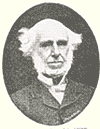 |
|
|
|
|
|
|
|
|
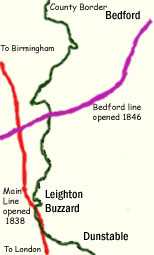 |
|
|
|
 |
|
|
|
|
|
|
|
Rail map of 1846 |
|
|
|
|
 |
|
|
|
Richard Moon |
|
|
|
|
|
|
|
|
|
|
|
|
 |
|
|
In its early years the Company was dominated by its chairman Captain Mark Huish, a former official of the East india Company. Huish was succeeded by Richard Moon who was chairman from 1861 to 1891. Both these men devoted themselves to making money for the Company. They got the reputation as penny pinchers. |
|
|
|
 |
|
|
|
|
|
|
|
|
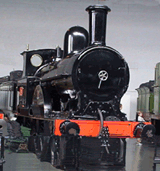 |
|
|
|
|
|
|
 |
|
|
L&NWR engine Hardwicke at National Railway Museum painted in Blackberry Black |
|
|
|
|
|
|
|
|
 |
|
|
These penny pinching ways explain why the Company painted its locomotives black: not only was black paint cheaper and longer lasting but was easier and therefore cheaper to apply; it was slower to show the dirt so locomotives did not need to be washed as often. The passenger locomotives were painted 'Blackberry black' and were always highly polished and the carriages were painted with the Company's distinctive livery of purple-brown lower panels and bluish-white uppers (called purple lake). |
|
|
 |
|
|
|
|
|
|
|
|
|
|
|
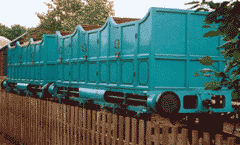 |
|
|
|
 |
|
|
This carriage is a copy of one that is similar to the third class carriages that the L&NWR would have used. |
|
|
|
|
 |
|
|
The Company used different types of trains comprising of different types of carriages. First class carriages with six cushioned numbered seats. Second class with open sides, but roofed, with eight uncushioned unnumbered seats (the `Night Mail' though included second class carriages that were entirely protected from the elements). Third class, used only in slow stopping trains, were uncovered and had benchs seating four passengers each. Towards the end of the 19 Century there was an improvement in the comfort, design and furnishings of the carriages e.g. provision of toilets, heating, lighting, dining and even sleeping facilities. L&NWR built royal trains for Queen Victoria and Edward VII. The train for Edward VII was an 11 carriage train which was used as an office as well as a home. |
|
|
 |
|
|
|
|
|
|
|
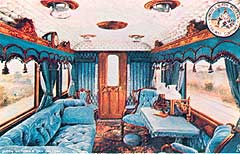 |
|
|
|
|
|
 |
|
Queen Victoria's Living room on the royal train |
|
|
|
|
|
|
 |
 |
|
|
|
|
|
|
|
|
|
|
|
 |